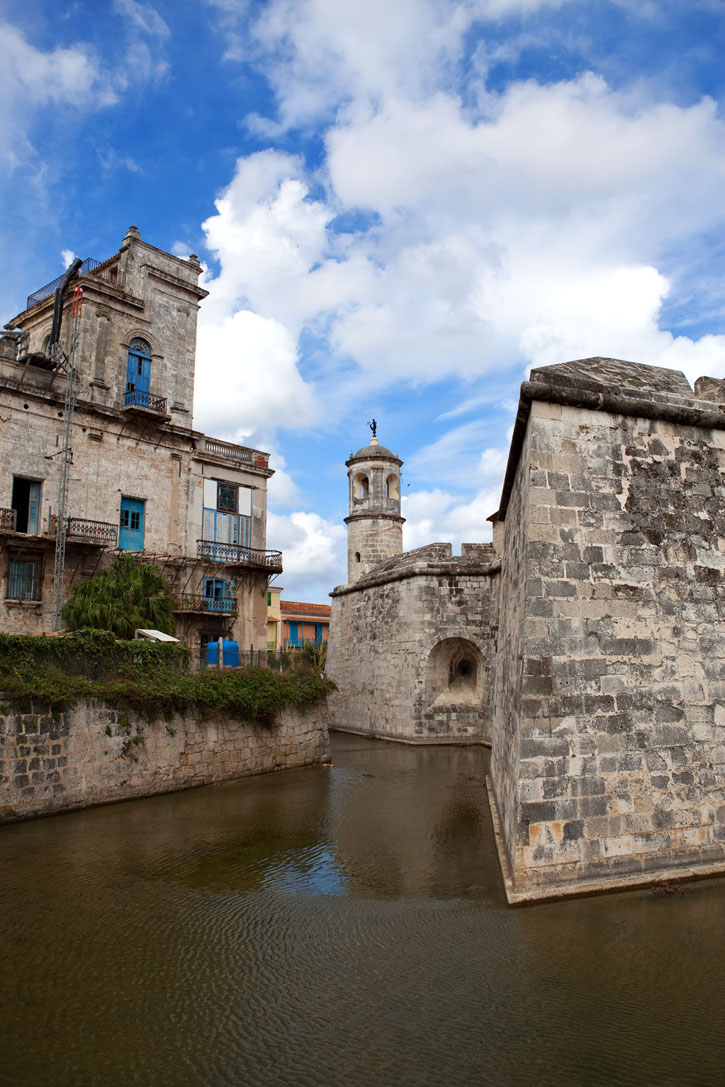The pocket-size Castillo de la Real Fuerza (Royal Power Castle, O’Reilly #2, tel. 07/864-4488, Tues.-Sun. 9:30am-5pm, entrance CUC3, cameras CUC5), on the northeast corner of the plaza, was begun in 1558 and completed in 1577. It’s the oldest of the four forts that guarded the New World’s most precious harbor. Built in medieval fashion, with walls 6 meters wide and 10 meters tall, the castle forms a square with enormous triangular bulwarks at the corners, their sharp angles slicing the dark waters of the moat. It was almost useless from a strategic point of view, being landlocked far from the mouth of the harbor channel and hemmed in by surrounding buildings that would have formed a great impediment to its cannons in any attack. The governors of Cuba lived here until 1762.

Castillo de la Real Fuerza in old Havana, Cuba. Photo © Konstantin Kulikov/123rf.
The jewel in the crown is a four-meter interactive scale model of the Santisima Trinidad galleon, built in Havana 1767-1770 and destroyed at the Battle of Trafalgar.Visitors enter via a courtyard full of cannons and mortars. Note the royal coat of arms carved in stone above the massive gateway as you cross the moat by a drawbridge.The castle houses the not-to-be-missed Museo de Navegación (Naval Museum), displaying treasures from the golden age when the riches of the Americas flowed to Spain. The air-conditioned Sala de Tesoro gleams with gold bars and coins, plus precious jewels, bronze astrolabes, and silver reales (“pieces of eight”). The jewel in the crown is a four-meter interactive scale model of the Santisima Trinidad galleon, built in Havana 1767-1770 and destroyed at the Battle of Trafalgar.
A cylindrical bell tower rising from the northwest corner is topped by a bronze weathervane called La Giraldilla de la Habana showing a voluptuous figure with hair braided in thick ropes; in her right hand she holds a palm tree and in her left a cross. This figure is the official symbol of Havana. The vane is a copy; the original, which now resides in the foyer, was cast in 1631 in honor of Isabel de Bobadilla, the wife of Governor Hernando de Soto, the tireless explorer who fruitlessly searched for the fountain of youth in Florida. De Soto named his wife governor in his absence—the only female governor ever to serve in Cuba. For four years she scanned the horizon in vain for his return.
Immediately east of the castle, at the junction of Avenida del Puerto and O’Reilly, is an obelisk to the 77 Cuban seamen killed during World War II by German submarines.
Excerpted from the First Edition of Moon Havana.